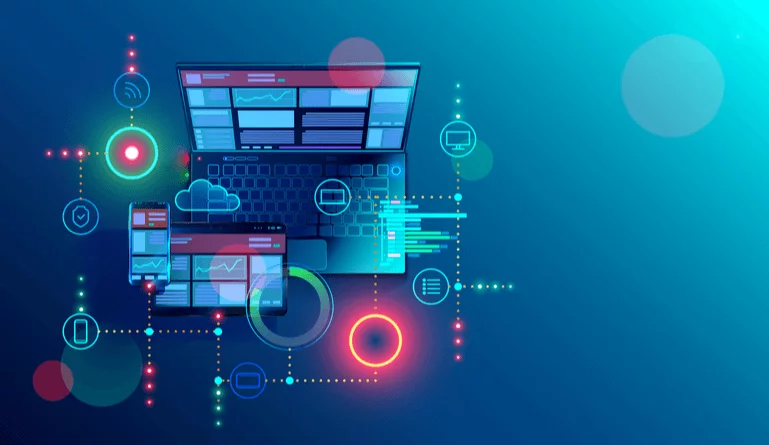In the lifecycle process of a software application, there is a phase where the application undergoes maintenance, upgrades, and version updates. This phase happens right from the point that the application enters the software development lifecycle.
Application management is a set of processes around governance that ensures that the application performance is at its crescendo with great efficiency. Application management also entails documentation both technical and non-technical in nature.
Thus, we can say that application management also known as AM, is typically a service function that performs the function of managing, maintaining, and supporting applications and important stakeholders who are responsible for delivering technical expertise through the lifecycle.
However, there are processes such as Application Lifecycle Management (ALM) and Application Performance Management (APM). Here, in this process, there are multiple stakeholders that are involved who are supposed to work in a collaborative manner.
The objective is to derive important decisions such as building applications or buying one, or things such as whether an application should undergo innovation or should it be replaced, or whether the applications should be on cloud or on-premise.
Key Stakeholders
Here are some of the key stakeholders in application management (AM).
-
Application Analyst:
This stakeholder practically owns the process and is responsible for managing the overall lifecycle of the application. Usually, in this scenario, there would be a single analyst or a team of analysts for each of the applications. The analyst is responsible for conducting skill gap analysis and identifying the skills required or probably hiring an external staff.
-
Business unit owners:
These are staff members from business functions, who basically view applications and application management from a perspective of bottom-line benefit, revenue impact, and productivity.
-
Developers:
These are technical professionals who are bestowed with the responsibility of designing, developing, and implementing the application. They are also responsible for the integration of the application along with maintenance and security.
-
Users:
These are people who are using the application for their requirements. They provide constant feedback on the performance of the application and how it impacts their productivity. Important aspects from a user’s point of view are the privacy and security of the applications that they use.
The bottom line of an application management service is to come up with an effective code that will ensure the right performance of the application so that the enterprise can attain its objective. These objectives are both technical and managerial in nature and in case of any technical issues, it has to be detected quickly and resolved.
( Also Read: What is PaaS (Platform-as-a-Service)? )
Importance of application management
If any business has to innovate, then it can be achieved only through application management. By providing modern applications to every business function in an enterprise, business processes can be quickly delivered to the market effectively, efficiently, and faster, and at a lower cost. On effective management of applications, resources are freed up, and they can focus their attention on new business challenges and other pertinent issues.
Furthermore, applications that are managed effectively and efficiently, are less prone to failure which could lead to loss of functionality, which can cause potential business loss. In a nutshell, proper application management can help in reducing the risk of downtime and thereby improve the continuity of business.
Application management can also enhance the end-user experience by constantly monitoring user issues and also incorporating new capabilities in the application. This new user experience will help in increasing productivity, and also accelerate faster adoption of new features.
If we look at the importance of application management on the bottom line, then it is manifold. For instance, if management strategies are efficiently executed, then the immediate impact is a reduction in man-hours that are spent in meetings. This results in a significant surge in the productivity of these resources. Strong application management practice can reduce the dependency on external consultants, thereby bringing down the total operational cost considerably.
The job of an application manager
Application Managers are technically IT professionals who are given ownership of the application management process. They completely manage the lifecycle of an application in the SDLC within an enterprise. These application managers are neither developers nor they are users.
We can say that they are more analysts who do research and try to find new business applications and share these findings with other key stakeholders of the organization. Application managers also lead the implementation process along with maintenance and the end of an application.
Some of the skills of an application manager are:
- Strong knowledge of project management
- System analysis that also includes design, development, implementation, and support
- Knowledge of business process automation
- Database management
- IT troubleshooting
- Communicating technical points to non-IT audiences from the user group
What is Application Lifecycle Management?
Application lifecycle management is nothing but an ecosystem that allows application managers to manage the application end to end. ALM as it is quite commonly known comprises various stakeholders, ALM tools, and a process for managing the application covering every phase during the existence of the application.
Today we see more and more enterprises adopting agile methodology over the traditional waterfall model and moving from DevOps to more cloud-based native applications. In parallel, there is also a continuous evolution in application lifecycle management tools and processes. This is to ensure that in an enterprise, if there are multiple applications, then the ALM processes and tools for each of them are in sync, while they transition from legacy methods to a more modern and flexible way.
A key objective of application lifecycle management is to ensure that all these different practices are merged into a single comprehensive management methodology, which comprises legacy, cloud-native development, and agile methodologies.
The organizations that have embraced application lifecycle management have also adopted continuous integration and continuous delivery. Through these two methods, they can have continuous and more frequent releases on the application front, compared to the traditional method of quarterly release.
ALM has many distinct phases such as:
- Governance: This is the first step, where decisions are taken on the need of business applications, what kind of problems will they be solving, the type of resources required to develop such business applications. This phase also involves decisions on the type of security required and what should be the guidelines for that.
- Development: Development teams will start building the application by using various tools and agile methodologies to ensure that they are able to achieve continuous integration and continuous delivery. This is followed in both scenarios of compartmentalized deployments, which is the modern used case or even for the traditional VM workloads. The development process comprises of writing or procuring codes, testing the application, and facilitating the implementation after the initial development of the application is completed.
- Maintenance: Once the implementation and rollout are completed, application lifecycle management focuses on maintenance of the application till the end of its life. Frequent releases ensure bug fixing as well as the addition of new features. It also helps in integrating the application with other new systems or existing legacy systems. If applications are to be moved from one server type to another, for instance, on-premise to cloud and so on, then such use cases also fall under the maintenance phase of the application.
It is quite common to know that enterprises don’t rely heavily on a single ALM tool. On the contrary, they have multiple such tools that work in tandem to ensure smooth functioning of the application – business as usual.






